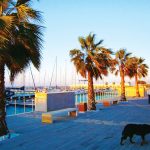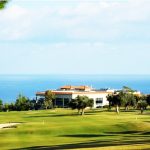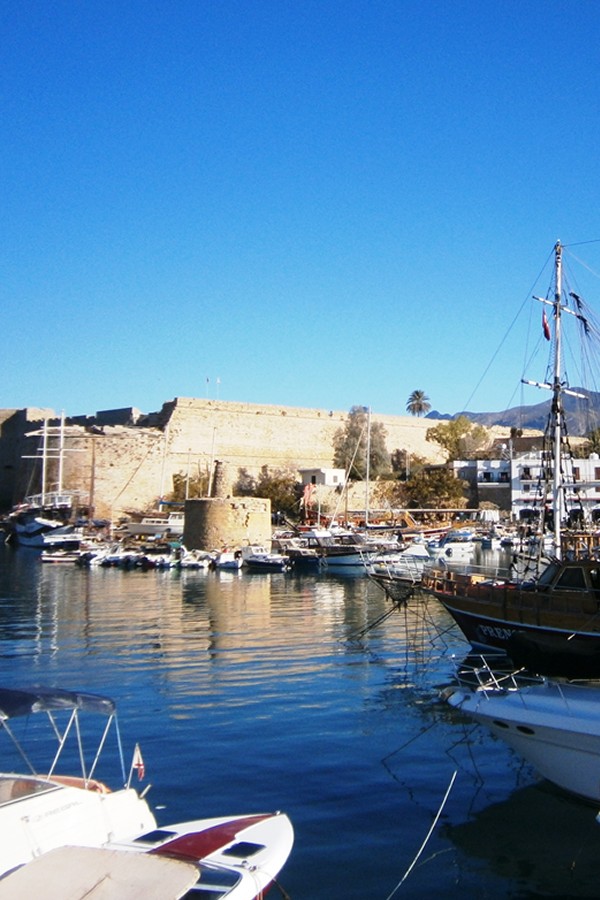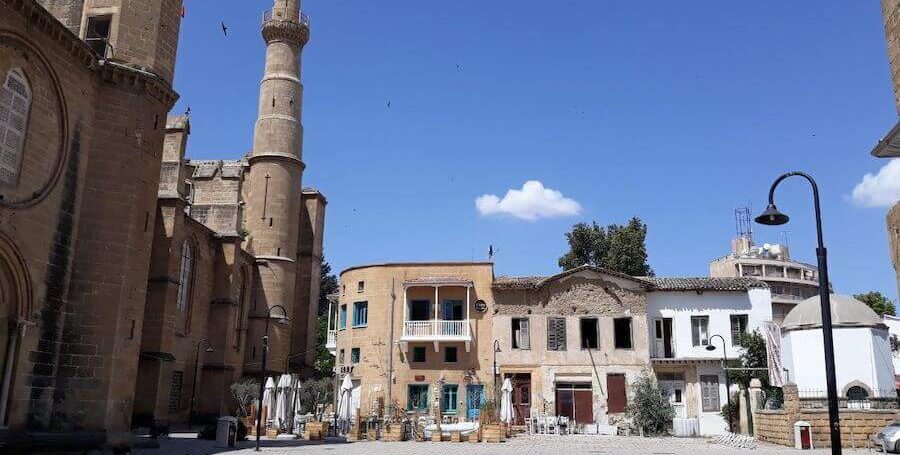
You can also listen to this article.
The Lefkosa (North Nicosia) area of North Cyprus
1. Introduction to the Lefkosa (North Nicosia) area
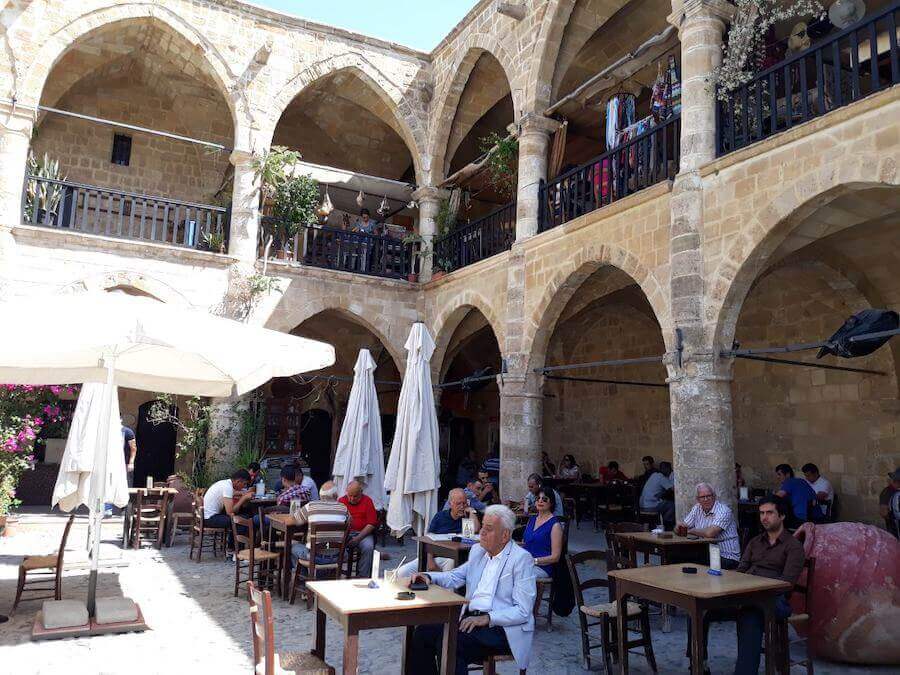
Lefkosa, the Turkish name for the Cypriot capital city (named as Nicosia by the British – presumably a corruption off the Greek name’ Lefkosia’ ), has gained the curious distinction of being the last remaining divided capital city in the world, following the fall of the Berlin wall in Germany. Hence Lefkosa denotes the section to the north of the border between the North and the South of Cyprus – a border which runs right through the centre of the ancient walled city itself. Lefkosa itself is in turn divided more or less into two distinct areas – the sprawling modern city with its new highways, suburbs and shops, and the north section of the fascinating, quaint old city with its key sites of interest within the remains of the original Venetian 11 gated circular walled city of Lefkosa. This is a must for any visitor to North Cyprus with 6 out of the original 11 gates in the Northern section and 5 in the South – bursting with character and ancient sights to explore and delight in.
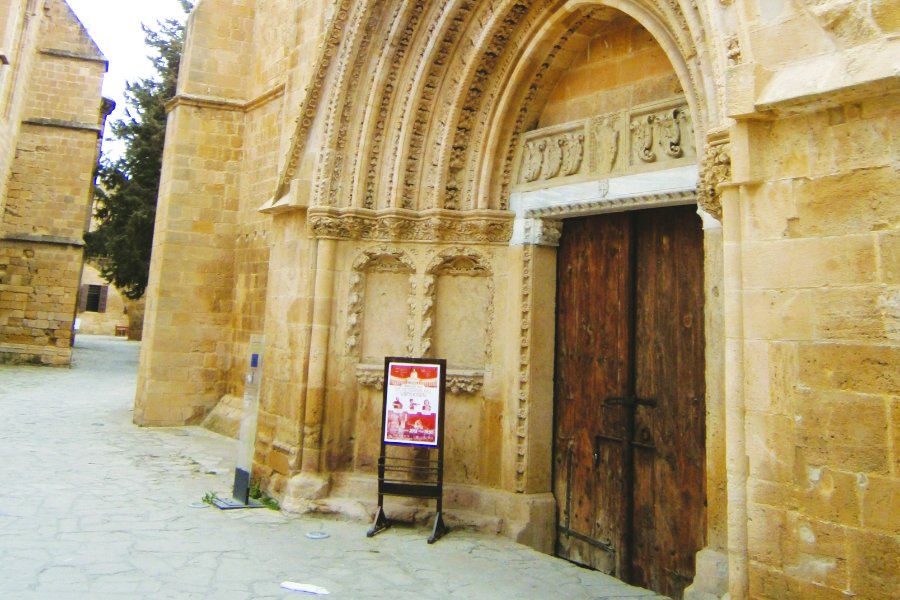
Many long-term residents and regular visitors to the TRNC spend years getting to know the north coast areas such as Kyrenia and Bellapais, without ever really venturing into the north of the capital city – and then once they find their way around it, totally fall in love with the old quarter with its Mosques, craft shops, markets, ancient Ottoman buildings and cobbled back streets and can’t understand why it took them so long to get to know it! So if you are new to North Cyprus, or particularly if you are just coming up for the day from South and walking over the border at Ledra, why not start with this unspoilt and wonderfully historic part of Cyprus’s capital city?
2. How to get to Lefkosa (North Nicosia)
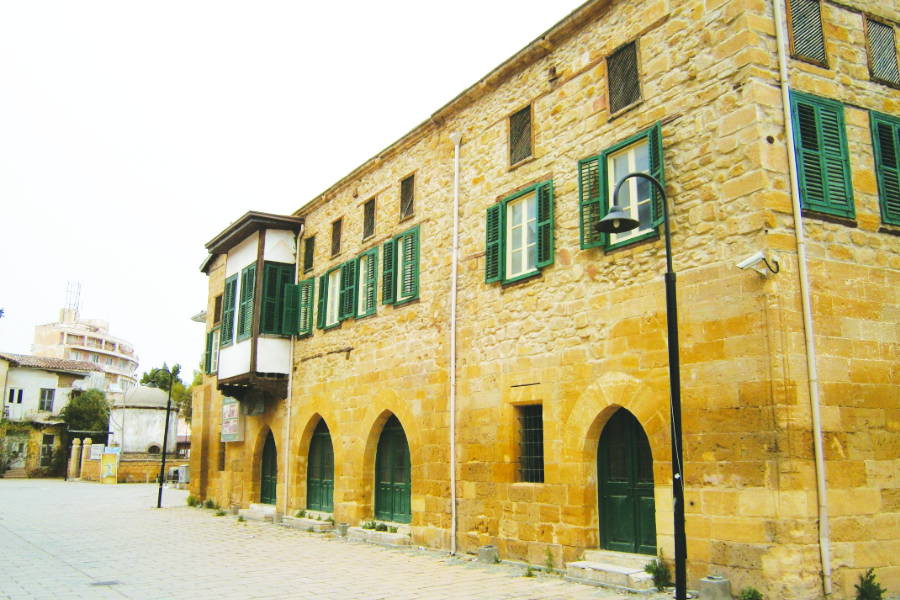
To get to Lefkosa from Ercan airport – To get to the outskirts of the capital city Lefkosa from Ercan airport is a very simple 20-minute car, taxi or (considerably longer) bus journey along a modern, dual carriageway highway. If you have collected a hire car at the airport, exit Ercan on the dual carriageway and after 5 minutes drive, turn left following signs to Lefkosa on the road from Famagusta to Lefkosa. If you wish to take a taxi – there are always taxis available at the airport. The standard taxi fare from Ercan to Lefkosa is around 70TL – it can be worth checking the price with the driver before you set off! The airport website https://www.ercanairport.net/ has details of the airport buses to both Kyrenia and Lefkosa, although you do need to book in advance. If you are driving, do watch out as there are a huge number of speed cameras on this road, so be extremely careful to observe whichever of the variety of 50 and 70k speed signs and cameras you encounter en route. If you are hungry when you arrive at the airport, be aware that the only reasonable eating places are in fact on the left soon after you hit the Lefkosa road – if you wait too long there is nothing until you get into the centre of the capital.

To get to Lefkosa from Kyrenia (Girne) – There are a variety of transport options for travel to the old city of North Nicosia (Lefkosa) from Girne. If you don’t have a car and are willing to “rough it” slightly, do go to the Belidiye roundabout in central Kyrenia near to the Colony Hotel and catch a Dolmus bus which will take you all the way to the Kyrenia gate at the entrance to Old Lefkosa. This will cost you only around 4TL. A taxi from Girne to old Lefkosa will set you back at least 10 times that.
To get to Old Lefkosa from the main roundabout – If you are driving yourself into the centre of town from the main roundabout on the Famagusta highway, these directions may assist. From the main roundabout, follow signs for Ledra Palace. Drive past the state hospital on your left and over the roundabouts and keep going straight on through various sets of lights. Leave the Golden Tulip hotel on your right, go through the suburb of Ortacoy and then the road branches left and you will find yourself in a wide, four lane road. Keep RIGHT around what becomes a very large multi-lane roundabout and you will
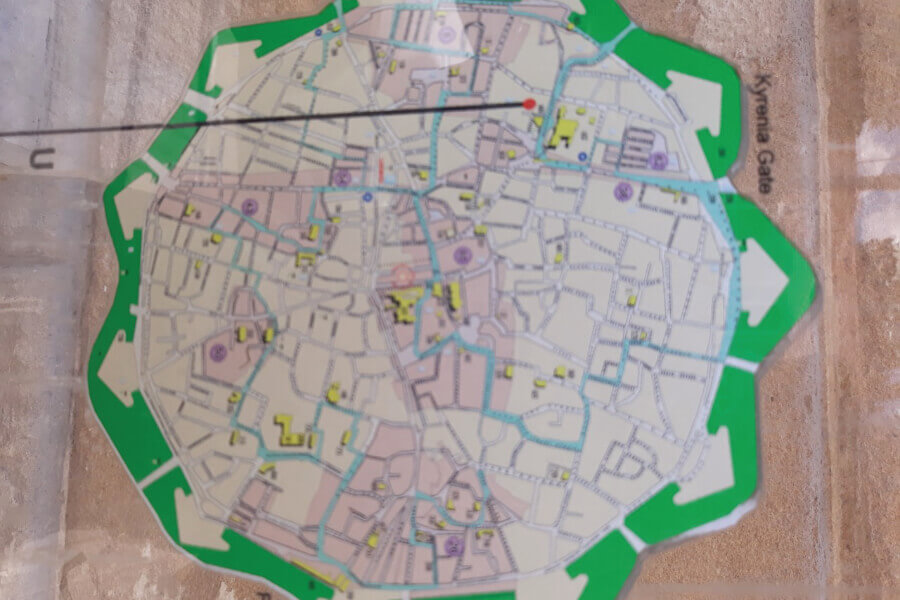
eventually come to the Kyrenia (Girne) Gate along the ancient wall to your left – the entrance to the old town. There are a few different options for parking once in the old town. One option is to take a right at the roundabout once you arethrough the Girne gate and then turn first left – you will find a 10TL all day car park. This is a great location for starting the Nicosia Trail or Martyrs Museum. If you want to park nearer to the Buyuk Han and Ledra crossing, you should carry straight on down this road and then, when you see the Saray Hotel ahead of you, turn left down the backstreets where you will find a variety of car parking options close to the Buyuk Han and Buyuk Hamam.
To get to Dereboyu (modern shopping area) in Lefkosa – If you were heading instead for the modern shopping area (Dereboyu) you should instead turn right at the Golden Tulip hotel. This will lead you right into this busy shopping area – with its branches of many major European clothing and cafe chain stores such as Gloria Jeans and Mango, as well as good local restaurants – a buzzing area at night-time and particularly popular with the young Turkish Cypriots. Here you can park relatively easily on the street or down a side road.

To get to Lefkosa (North Nicosia) from South Cyprus – If you are driving, you cannot drive cross at the Ledra Street pedestrian crossing in the centre of the capital city – although you can park at the bus station near Ledra and easily walk across, which is by far the best option if going to North Nicosia just for a day trip – and also avoids having to purchase extra car insurance for the north. Taxis are also available in the North of the city if you have walked across the wish to take a trip a bit further afield. However, if you need to take your own car to Lefkosa you will have to use the car crossing point at Agios Dimitios on the west side of Nicosia, near to the racecourse. Please note, you will need to purchase extra insurance at the border – and should not take a hire car across unless you have permission from your hire car company. For full driving directions from Paphos and Limassol to drive to North Cyprus, contact our office.
3. Key sites of interest in Old Walled City of Lefkosa (North Nicosia)
3.1 A guided walk around Lefkosa (North Nicosia)
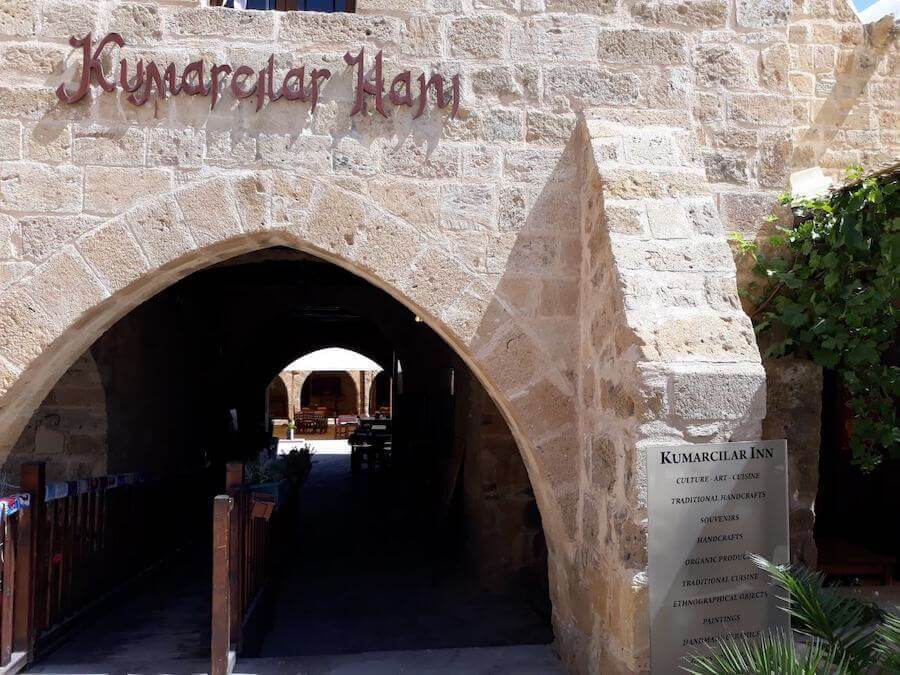
As arrive at the Kyrenia (Girne) Gate of the old walled city of Lefkosa, the Tourist Information office is located immediately ahead of you. There are two ways to take a guided walk around fascinating old Lefkosa – and both are totally free of charge. Firstly, you can do it alone – with the help of the blue painted footsteps which have been helpfully provided around a set circular route of the old town. The Tourist Office will provide you with details and map. Secondly, you can go on a free walking tour with an English speaking guide, organised by the government-run Cyprus Tourist Guides Association (KITREB). These take place three times per week on Mondays, Wednesdays and Fridays – and start at 10 am prompt in front of the Tourist Information office at the Kyrenia Gate – or 10.30am at the Lokmaci (Ledra) crossing point. There is no need to book and similar guided walks are organised for South Nicosia (Lefkosia).
During your two hours guided walk through the ancient walled city of Lefkosa, you will visit the Mevlevi Museum, Samanbahce Houses, the Venetian Column, Dervis Pasa Mansion, the Buyuk Han, Selimiye (St. Sophia) Mosque, Bedestan, Eaved House, and many other historical landmarks in the capital city.
3.2. The Selimiye Mosque (St. Sophia Cathedral)
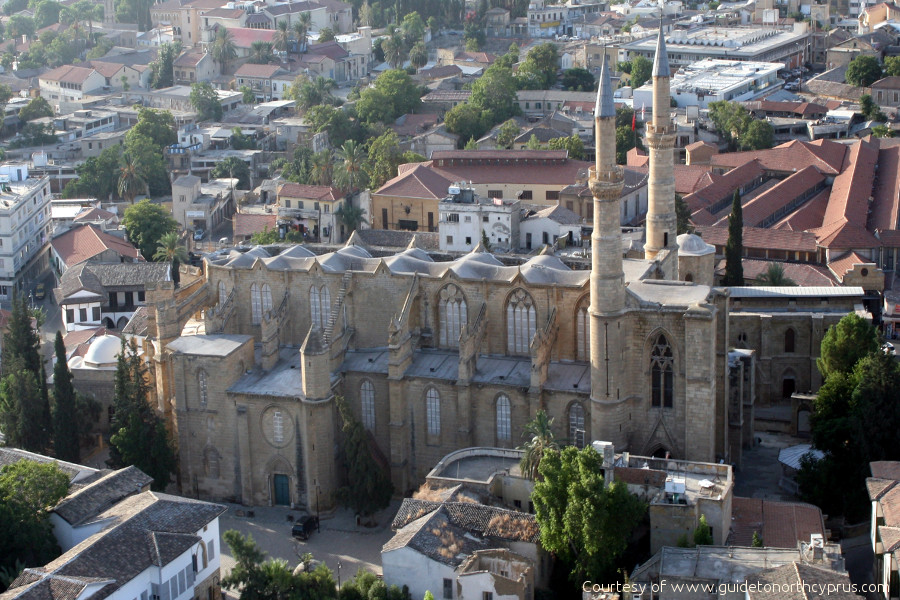
The Selimiye Mosque (Camii in Turkish) is a great place to start to explore the backstreets – not least as its tall twin minarets act as a homing beacon if you get lost – and also because the area surrounding the Mosque is full of the best ottoman buildings, backstreet markets and Turkish craft shops. If you follow the Girne Caddesi (Girne Street) straight down from the Kyrenia Gate and then dive left into the back streets just before you see the tall Saray Hotel, you will inevitably come to this, the most prominent of landmarks in old Lefkosa.
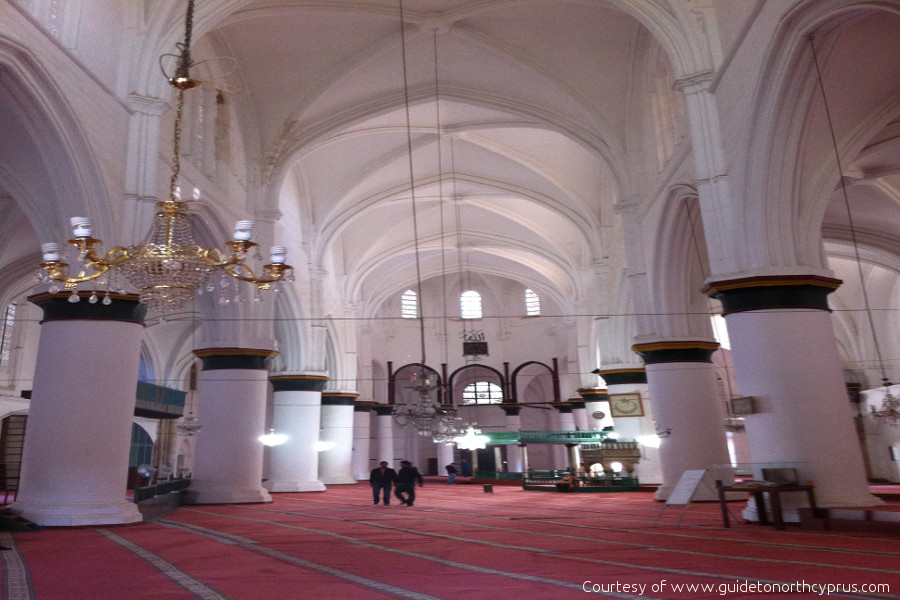
Construction started in the 13th Century by French craftsmen as a cathedral to St. Sophia and it is a masterpiece of construction, having stood not only the test of time mainly intact, but also several major earthquakes in the region over the centuries! As you enter the courtyard, you will see a circular marble washing area where devout Muslims wash their face, head, hands, upper arms and feet prior to entering the Mosque to pray. Visitors should respect the local traditions and go well covered, women should wear a scarf if possible, and you should remove your shoes and avoid taking photographs. Avoid the Friday midday prayers as the Mosque will be full. Once inside, you can see some superb carving and sculpture in the stone porch and also the high west window. The conversion from cathedral to Mosque is evident in the colourfully green and red painted mihrab or prayer niche in the southern wall, facing Mecca – as well as in the new green prayer platform where the Imam stands during services. The Mosque was renamed “Selimiye” in the 1950s after the Turkish Sultan Selim 2nd under whose reign Cyprus came under the control of the Ottoman Empire and acts as the main religious building in the TRNC for the celebration of the main annual Bayram or festivals after Ramadan (Seker and Kurban Bayramlar).
3.3 Buyuk Han and Buyuk Hammam

The “Buyuk Han” or “Great Inn” is just a short walk from the Selimiye Mosque and one of the most impressive and well restored Ottoman buildings in old Lefkosa. The largest Han or traditional Inn in North Cyprus, the Buyuk Han was built in 1572, just after Cyprus was taken from the Venetians by the Ottomans. It was designed as a protected, safe area for travellers and traders to eat, sleep and store their goods. Today its function is not so different – with a lovely collection of traditional shops and cafes, in busy tourist times it can be packed with visitors, but at other times it can be a peaceful haven for those who wish to browse and find refreshment away from the busy markets in the north Nicosia streets nearby. Often open quite late in the evenings, the central stone courtyard features a beautiful miniature mosque with a fountain which was initially used for pre-prayer ablutions. The design of the Han features downstairs and upstairs rooms, many of which are now used as art galleries and craft shops. As you enter through the main gate, to your left is an interesting exhibition of old photographs and an explanation of the history of the Han.
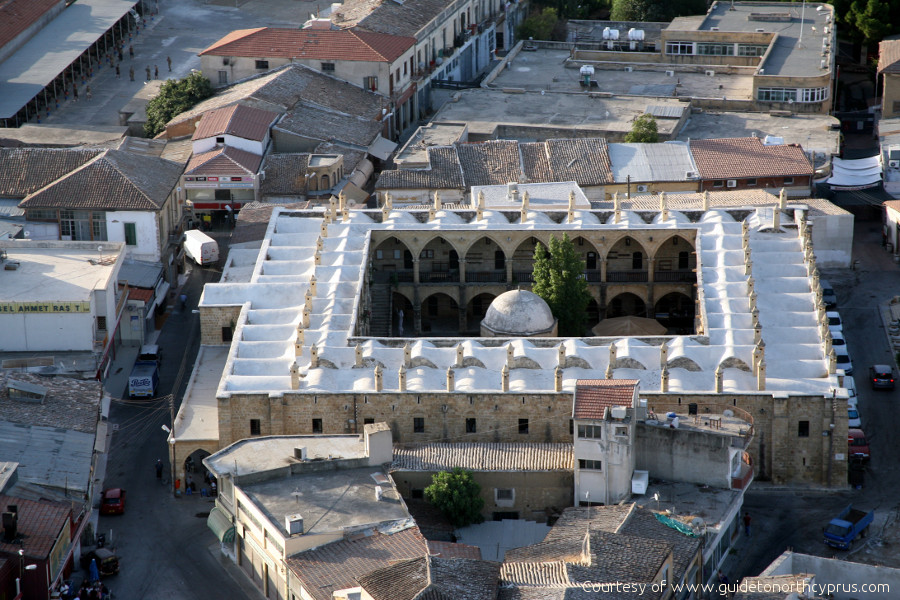
A little further north from the Buyuk Han is the Buyuk Hamam or Great Baths. Originally a church, the lovely stone building was initially converted by the Ottomans to a Turkish Bath and was more recently reopened to the public in 1989 by the TRNC government. Sometimes closed on Fridays, these baths are open most days until the evening and for around 40TL you can experience a genuine Turkish bath, with massage available for an extra charge. The entrance level is much lower than street level, accessed down some steps, demonstrating how much the Lefkosa street level has changed since the original building was created. The Ottoman Buyuk Han and Buyuk Hamam are both really worth a visit and are “must see” items on any history lover’s north Nicosia’s itinerary!
Crossing points in Lefkosa (North Nicosia) to Lefkosia (South Nicosia/south Cyprus)

There are two crossing points in Lefkosa (North Nicosia) to Lefkosia (South Nicosia) and onwards to the Greek Cypriot Republic of Cyprus. One is a pedestrian crossing point at Lokmaci/Ledra in the very centre of the old circular walled city – and one for those travelling by car on in the western suburbs at Metehan/Ayios Dimitios. It is fascinating for visitors, during your walk around Lefkosa (North Nicosia) in the old walled city, to go to Lokmaci Gate in the narrow backstreet market area in the centre of the old walled city and walk through the “no man’s land” tunnel to the very different and much more modern Ledra Street shops in the Greek Cypriot south of the city. In doing so you can experience the very real difference in atmosphere between the more traditional Turkish and Greek Cypriot halves of Nicosia, with Mosque and Turkish craft shops behind you – and modern European shops such as Debenhams and well-known fast food chains ahead. Some visitors have commented that the border between the South and North of Cyprus feels to them like the border between the Middle East and Europe! Expat residents living in the TRNC often enjoy a trip to the South for shopping and can find items from the UK and European shopping chains there which they are not able to obtain in the North. Hence crossing to visit both sides of Nicosia can offer “the best of both worlds”.
Both the pedestrian and vehicle crossing points are open 24 hours, 365 days per year, and to use both you will require your passport and the white paper entry visa you will already have been given upon arrival into the TRNC. There is no charge to cross.
A day visit to South Nicosia at Lokmaci/Ledra Street pedestrian crossing
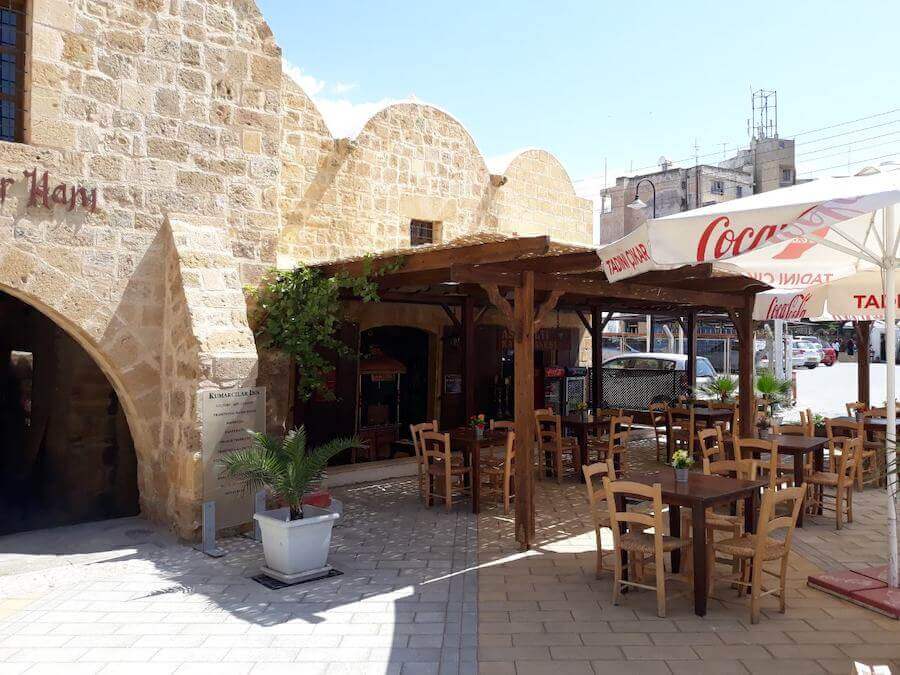
If you are on foot in the old walled City of Lefkosa in the market area, just before the Turkish checkpoint at Lokmaci, you will see one or two money changing shops on your left for the purchase of the necessary Euro currency. Show your passport to the Turkish officials, who cancel your entry visa and then walk through the hundred metres or so wide barricaded tunnel through the long-deserted empty houses of the “no man’s land” which separates the two halves of the city, and up to the Greek Cypriot immigration desk- and straight into Ledra Street. Don’t take any “fake designer goods/handbags” with you from the Northside or these may be confiscated – buy those on your way back! You will immediately feel a different atmosphere. Greek will be spoken all around you, although you will find that most Greek Cypriots are completely fluent in English.

Try not to use your recently acquired Turkish words, or attempt to pay in Turkish Lira or you will find a somewhat frosty reception. If you have missed seeing the more familiar chains of European stores and fast food outlets (including the Ledra Debenhams, Holland and Barratt, Costa Coffee and MacDonalds!) then you will feel very at home. However, there are also some interesting more traditional craft shops and unusual restaurants in the back streets. If you take a left turning at Debenhams and then traverse the back street running parallel to Ledra Street you will also find restaurants, including Lebanese, excellent mainland Greek and other international eating places. Apart from clothing, restaurant and other prices tend to be higher than in the North. At the end of Ledra Street, you will find various banks as well as a bus station and taxi ranks if you wish to explore further afield during your day trip.
General tips on crossing
Mobile phone roaming: If you have switched to a Turkish Sim card, please note you will only get a signal if you stay quite near the border – but if roaming your international mobile phone will switch to Cytanet or one of the other local networks for south Cyprus. You can purchase a Greek Cypriot sim card very cheaply at any of the many “kiosks” in South Cyprus if you plan to stay a few days and wish to make cheaper calls.
Currencies accepted in South Cyprus: If you wish to cross over to the European Greek south side of Nicosia, you should ideally take some Euro currency with you as banks in south Nicosia close as early as 1.30pm on many days (variable depending upon the day or the week and time of year) and even if open, will not change Turkish Lira at all! (although they will change pounds sterling). Unlike the flexible attitude in Turkish Cyprus, where traders take almost any currency (pounds, Euros, Turkish lira and sometimes dollars), only Euros are accepted in the South of Cyprus.
Travelling by car to the South of Cyprus from the TRNC
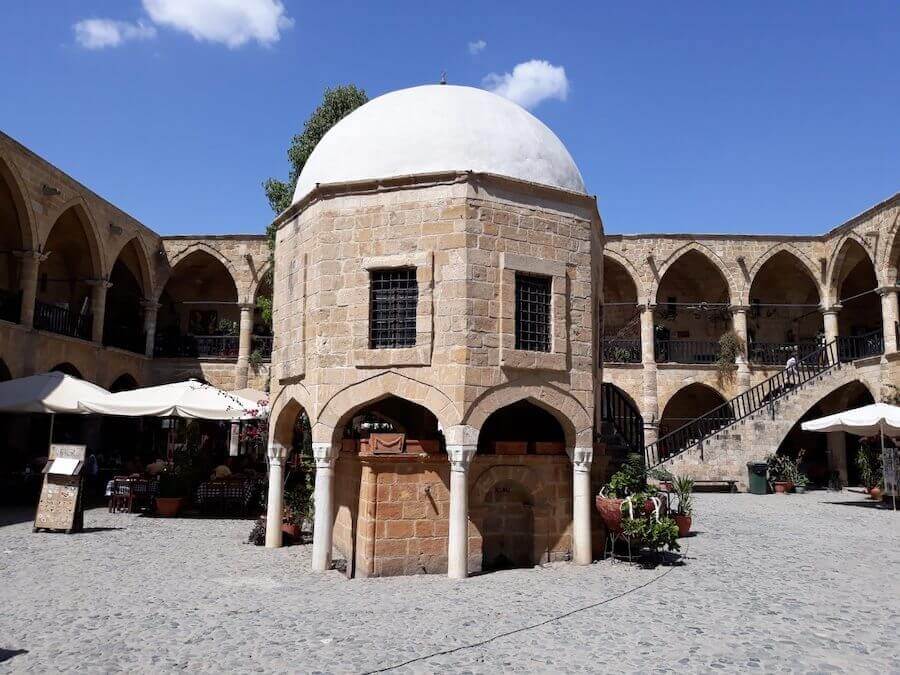
At present you can ONLY take private cars from the north – and only those which have the relevant tax and insurance for the south (these can be purchased on the Greek side at the main crossing points, but only during office hours and only if you have all the correct car documents with you). Cars hired in the North of Cyprus cannot currently be taken South – they must be left parked on the north side. If you do not have a private car and wish to explore further afield in the South of Nicosia or undertake an onward journey, you must either use buses, taxis or even hire a second south hire car for a limited period of time on the south side – buses and taxis can be easily found during a walk over the Lokmaci/Ledra gate crossing.
There are many taxi companies in the North of Cyprus (TRNC) who will quote rates to take you across the border. Don’t be surprised if they change their number plates at the border crossing – although they are allowed to advertise themselves as taxis in their native North, they are only counted as private cars in the South. This is standard.
Passports and visas required for entry to the Republic of Cyprus from North Cyprus
Only citizens of Europe, existing or former Commonwealth countries (excluding S. Africa) and/or those holding a valid Schengen visa for the Republic of Cyprus will be allowed to cross from the North to the South of Cyprus. Those holding Turkish passports or those from non-Schengen countries are not allowed to cross into the Republic of Cyprus. If you are unsure, please check with your travel agent before planning your trip to the European South of Cyprus during your stay in the TRNC.


